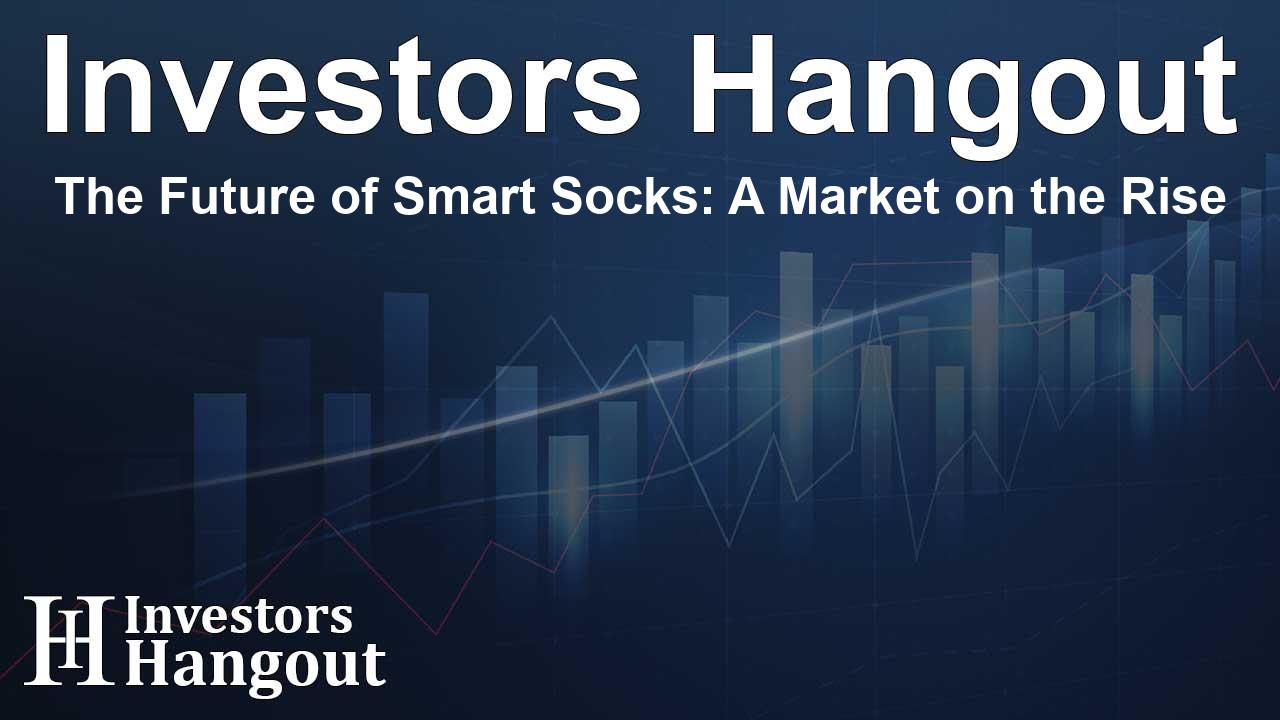Understanding Smart Socks: The Future of Wearable Technology
Smart socks have emerged as a revolutionary advancement in wearable technology. Encompassing more than just fashion elements, these socks are equipped with sophisticated sensors designed to monitor various physiological parameters of the wearer. From tracking movement and heart rate to detecting sweat levels, smart socks are transforming the realm of personal health monitoring.
Market Overview and Growth Projections
According to the latest insights from Polaris Market Research, the smart socks market is on a significant upward trajectory. With a valuation of approximately USD 66.59 million in the recent analysis, this market is expected to soar to an impressive USD 174.06 million by 2034. This robust growth is set against a projected compound annual growth rate (CAGR) of 10.1% from 2025 to 2034, showcasing the growing demand for technology-interfused apparel.
The Importance of Smart Socks in Healthcare
Smart socks offer profound benefits, especially in the healthcare sector. For individuals with conditions such as dementia, these socks can play a crucial role in monitoring agitation and preventing falls. Additionally, they serve healthcare professionals by providing valuable data regarding weight support for fractured limbs, swelling, and other crucial health indicators. Unlike traditional wearables, smart socks are designed for convenience—machine washable and requiring no charging, they seamlessly integrate into the daily lives of users.
Key Drivers of Market Growth
Healthcare Demand and Chronic Illnesses
The increasing prevalence of chronic health conditions, including diabetes and related foot issues, has accelerated the demand for specialized wearables like smart socks. These innovative products offer patients and caregivers tools to monitor conditions in real-time, thereby enhancing their quality of life through timely interventions.
E-commerce Surge
The rapid expansion of the e-commerce sector has made it easier for consumers to access smart socks. Online platforms not only increase visibility for brands but also cater to a health-conscious demographic that seeks modern solutions to traditional challenges. This growing reliance on digital marketplaces ensures that wearable technology reaches a wider audience.
Technological Innovations Behind Smart Socks
Ongoing advancements in smart technology are also driving the development of smart socks. Innovations in material science and the integration of cutting-edge sensors allow these products to provide more accurate and comprehensive health data. Furthermore, the incorporation of connectivity features enables users to sync their data with smartphones or other devices for detailed analysis.
Regional Insights into Market Trends
North America: Leading the Charge
In the current landscape, North America holds a significant portion of the smart socks market, largely due to increased disposable income and a rising awareness of personal health and wellness. The region's burgeoning fitness culture, coupled with a strong e-commerce presence, continues to propel market growth.
Asia Pacific: Emerging Opportunities
The Asia Pacific region is anticipated to witness substantial growth in the smart socks market from 2025 to 2034. As awareness of health and wellness increases and healthcare wearables gain popularity, this region prepares for a significant infusion of smart technologies into daily life. Factors like urbanization, a growing population, and a push toward preventive healthcare are catalyzing this market expansion.
Key Players: Innovators in Smart Socks Technology
The competitive landscape of smart socks features several key players relentlessly pushing the boundaries of technology and functionality. Noteworthy companies include Sensoria, Inc., Milbotix Ltd, and Adidas, among others. These innovators are continuously investing in research and development to stay ahead, improving their offerings and contributing to the overall growth of the market.
Frequently Asked Questions
What are smart socks?
Smart socks are advanced wearable devices that utilize sensors to track various physiological metrics like movement, heart rate, and even sweat levels.
How fast is the smart socks market growing?
The smart socks market is projected to grow from USD 66.59 million to USD 174.06 million by 2034, with an anticipated CAGR of 10.1% from 2025 to 2034.
What benefits do smart socks offer in healthcare?
Smart socks provide vital health monitoring capabilities, making them ideal for managing conditions like dementia and tracking recovery post-injury.
Which region dominates the smart socks market?
North America currently leads the smart socks market due to higher disposable incomes and rising health awareness among consumers.
Who are the main competitors in the smart socks market?
Prominent players include Sensoria, Inc., Milbotix Ltd, and Adidas, all of whom are at the forefront of innovating smart sock technology.
About Investors Hangout
Investors Hangout is a leading online stock forum for financial discussion and learning, offering a wide range of free tools and resources. It draws in traders of all levels, who exchange market knowledge, investigate trading tactics, and keep an eye on industry developments in real time. Featuring financial articles, stock message boards, quotes, charts, company profiles, and live news updates. Through cooperative learning and a wealth of informational resources, it helps users from novices creating their first portfolios to experts honing their techniques. Join Investors Hangout today: https://investorshangout.com/
Disclaimer: The content of this article is solely for general informational purposes only; it does not represent legal, financial, or investment advice. Investors Hangout does not offer financial advice; the author is not a licensed financial advisor. Consult a qualified advisor before making any financial or investment decisions based on this article. The author's interpretation of publicly available data shapes the opinions presented here; as a result, they should not be taken as advice to purchase, sell, or hold any securities mentioned or any other investments. The author does not guarantee the accuracy, completeness, or timeliness of any material, providing it "as is." Information and market conditions may change; past performance is not indicative of future outcomes. If any of the material offered here is inaccurate, please contact us for corrections.
